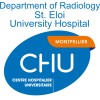
Contingency Management Using Smartphone App in Patients With SUD
Substance Use DisordersThe purpose of this research study is to test the acceptance and efficacy of a smartphone app (DynamiCare Rewards) for patients with substance use disorder (SUD) who are in active treatment and recovery at BrightView.

Medications for Opioid Use Disorders (MOUD) Via Telemedicine
Opioid Use DisorderMedication Assisted Treatment (MAT) of Veterans with Opioid Use Disorder (OUD) decreases mortality and improves treatment follow-up. However, outside of large and/or urban VA medical centers, there are shortages of providers with experience treating OUD and a license to prescribe buprenorphine. This has resulted in decreased access to MAT (buprenorphine/naloxone and injectable naltrexone) at rural CBOCs and increased overdose rates in rural areas. Some individual prescribers have used clinical video teleconferencing (CVT) to overcome geographic barriers and prescribe MAT to Veterans in CBOCs. However, while locally effective, these arrangements are not standardized and are not parts of larger VISN-wide or national VHA strategies. This proposal describes an effective program that the investigators propose to replicate and expand. The program involves increasing prescribing rates of MAT for OUD in CBOCs using telemedicine. The investigators propose to (A) develop materials and procedures for the dissemination of telemedicine delivery of MAT to Veterans at CBOCs and (B) implement telemedicine prescribing of MAT at rural CBOCs in Northern Maine that lack on-site MAT providers. MAT will be prescribed by the VISN 1 Telemental Health Hub, which already provides medication management, psychotherapy, and some MAT to sites in Northern Maine. In later years, the program will be expanded to other VISN 1 CBOCs, and to other TMH Regional Hubs that provide services to wide catchment areas in other VISNs. By building on an existing infrastructure connecting these TMH Regional Hubs to CBOCs and collaborating with other national initiatives (e.g. SCAN ECHO, PDSI, and academic detailing), telemedicine MAT will be rapidly disseminated to Veterans at CBOCs who are at high risk for illness, overdose, and premature death from opioids.

Longitudinal Assessment of Functional Connectivity in Treatment Engaged Cocaine Users
Cocaine DependenceSubstance Use DisordersHigh-relapse rates to addiction are likely due to motivational (limbic) and cognitive (executive) factors. The purpose of this proposal is to determine the relationship between functional connectivity in executive control regions (namely the dorsolateral prefrontal cortex) and both proximal and extended outcomes in treatment seeking cocaine and opiate users. This longitudinal neuroimaging study will assess the integrity of executive and limbic circuits 4 timepoints before and after a 28-day intensive outpatient treatment program. Controls will also be recruited as a comparison group. The fundamental neuroscience knowledge gained from this proposal will be used to develop new evidence-based brain stimulation treatment strategies to enhance the integrity of these circuits and subsequent outcomes in traditional treatment programs. The purpose of this study is not only to look at the integrity of these circuits in individuals entering treatment but also to see how these circuits change after treatment and if this can be used to predict outcomes. From the larger societal perspective this research may help us determine which individuals are likely going to benefit the most from treatment and perhaps those that are at a greater risk for relapse.

ZOlpidem and the stRengthening of pRescription regulatiOn
Substance Use DisordersFor several years, the French Addictovigilance Network (FAN) highlights potential problematic consumptions with zolpidem. To prevent abuse and misuse of zolpidem, the French Health Products Agency has changed the regulatory framework of zolpidem prescription. Thus, since the 10th of April 2017 zolpidem prescriptions have to be secured (particular support, dosage written out). The investigators hypothesized that this change will affect zolpidem consumption but also the consumption of all sedative drugs. In order to assess the incidence of the regulatory change for zolpidem prescription the investigators conduct a two part study: an epidemiological study with French National Health Insurance Fund for Employees database and an observational study with general practitioners and zolpidem consumers.

Nitrous Oxyde Misuse Among Teenagers Consulting in an Addictology Center Dedicated to Young Drug...
Nitrous OxideDrug AbuseNitrous oxide gas is used in several application areas : medical as an anesthetic drug ; in food industry as a foaming and a mixing agent ; industrial to speed combustion. It is also misused for its hilarant, euphoric and hallucinogenic effect. For this purpose the gas is transfered in a balloon to be inhaled. As its effects are briefs, its consumption is often perseived as safe. However, some risks exist and are majorated by the way of use and for some groups of people. Since 2016, the French observatory of drug and substances addiction (OFDT) describes an increasing misuse of nitrous oxide amoung teenagers and young adults. In november 2019, a french press release alerts on the recent increasing of neurologic side effects related to the misuse of nitrous oxide. That's why, it seems to be interesting to improve the screening of nitrous oxide abuse, in particular amoung adolescents and young adults. In our study, the investigators would like to determine the characteristics (social, medical, any drug abuse) of teenagers and young adults who misuse nitrous oxide. Through a questionnaire, the investigators plan to select teenagers and young adults who consult in an addictology center dedicated to young drug consumers in Montpellier. This questionnaire is anonymous. The data will be collected only after obtaining the patient's agreement. The final goal is to create a tool to help general practitioners in screening young people at risk of nitrous oxyde misuse.

Providing Expanded Continuous Labor Support to Pregnant Women in New Mexico With Substance Use Disorders...
Pregnancy RelatedSubstance Use DisordersThis study will determine the feasibility of offering expanded continuous labor support by trauma- and addiction-trained medical paraprofessionals (i.e. doulas) at no cost to pregnant women receiving care for substance use disorders (SUD). The long-term goal of this transdisciplinary multilevel intervention is ultimately to reduce a major existing behavioral health disparity in the state. This cross-campus multi-disciplinary collaboration, is in partnership with Young Women United (a research and policy organization in NM) and doulas of the UNM Birth Companion Program. Through this partnership, women receiving combined OB/SUD treatment at the Milagro Program at UNMHSC will be offered expanded doula services.

Swift, Certain, and Fair: Reducing Recidivism and Improving Outcomes for Alcohol and Drug Users...
Substance AbuseCriminal BehaviorThis research project will study the outcomes of medium- to high-risk parolees with a history of substance abuse in Alleghany County, Pennsylvania supervised under Swift-Certain-Fair parole. The research goals are to: Determine the effectiveness of SCF parole in reducing recidivism among medium- to high-risk parolees with a history of substance abuse in Pennsylvania. Determine the minimum effective sanction in response to a violation that will bring parolees into compliance with the conditions of their parole.

An Opioid Prescribing Nudge
Opioid UseUnspecified5 moreAnalyze baseline concurrent opioid prescribing metrics at the individual prescriber level in the Duke Health System on the identified three main outcome measures. Test the impact of reports on opioid prescriber behaviors with the following primary measures: number of prescriptions with concurrent benzo within reporting period, number of prescriptions with concurrent muscle relaxants within reporting period, and number of encounters with naloxone prescriptions for patients with any opioid-related diagnosis within reporting period. Create a blueprint to implement the concurrent opioid prescribing nudge intervention in other settings.

Examining Community-based Effectiveness of a Substance Use and HIV Risk Reduction Intervention for...
Substance UseSexual RiskThis study will conduct an effectiveness trial of the 4-session evidence-based YMHP intervention for YMSM of color ages 15-29 at two CBOs in New York City, compared to usual care.

Substance Misuse To Psychosis for Ketamine (SToP-K)
Ketamine AbusePsychotic Disorders3 moreEvidence suggests that repeated or chronic ketamine use, as compared to acute ketamine users, posed a higher clinical risk of developing psychotic disorders, potentially related to the underlying chronic N-methyl-D-aspartate receptor (NMDAR) dysfunction, and a higher risk of suffering from schizophrenia particularly in those genetically susceptible, or genetically predisposed ketamine abusers. With ketamine infusion rises as a emerging hope as an acute treatment for depression and suicidality under the shadow of unknown longer term psychotomimetic effects peculiarly amongst repeated or chronic use, the current case-control study aims to investigate: a) if repeated or chronic ketamine use is associated with an increased risk of psychosis by comparing those ketamine abusers with and without psychosis, and to those non-ketamine-using drug abusers with psychosis; and b) if genetic predisposition from single nucleotide polymorphisms are associated with risk of psychosis in ketamine abusers.
